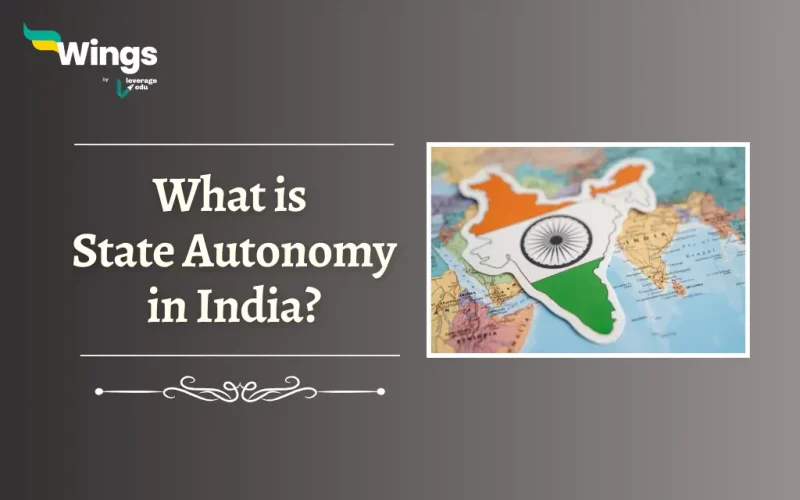Autonomy is the right of any person, State, or organization to govern and judge itself on its grounds. It is the right of a State to independence and self-governance through national power and political processes. However, State Autonomy is a subject of debate between States and the Center. Furthermore, in the Hon’ble Constitution of India, the mention of an autonomous state is done through the Sixth Schedule. Notably, most of the states are a part of North East India. This article briefly speaks about what is state autonomy in India and why states want more autonomy.
Also Read: The Directive Principles of State Policy
What are the Characteristics of State Autonomy?
Here’s a breakdown of the key characteristics of state autonomy in India:
- Power Sharing: The Indian Constitution divides powers between the Central government and the States through Schedule 7 and Schedule 8. Therefore, this gives power to the States to take care of particular areas like public order, police, education, healthcare, etc., independently.
- Financial Resources: Ideally, States should have control over sufficient resources to fulfil their responsibilities. However, the financial dependence on the Centre due to limited revenue generation abilities creates a strain on autonomy.
- Political Dimensions: Autonomy movements usually highlight the supremacy of the Central government. Moreover, in particular regarding discretionary powers like dismissing State governments (Article 356) or appointing Governors. In addition, States want greater political power in decision-making.
- Cultural and Linguistic Identity: State autonomy can also include the preservation and promotion of a State’s unique cultural heritage and language. Additionally, this is particularly important in India’s diverse landscape.
Also Read: What is the Administrative Tribunal in India?
Why do States want more Autonomy?
The Indian States have started demanding the autonomy of the State for various reasons which might include cultural variety, historical significance, economic management, political representation, resource management, regional growth, legal/administrative autonomy, and decentralization.
Furthermore, all of these things can be done to protect the integrity of the people, culture, and identities, and gain control of territory, governance, and more.
Also Read: Devolution of Powers and Finances up to Local Levels
List of Autonomous States
As mentioned above, the Sixth Schedule of the Constitution of India has given rights to these States and Union Territories for autonomy:
- Assam
- Ladakh
- Manipur
- Meghalaya
- Mizoram
- Tripura
- West Bengal
Also Read: What is a Lok Adalat?
State Autonomy Movements in India
Furthermore, here are a few State Autonomy Movements in India:
- Dravidian Movement: This movement in South India aimed at greater autonomy for Tamil, Telugu, Malayalam, and Kannada languages and cultural identities. Moreover, it led to the formation of separate States like Tamil Nadu.
- Northeast India: The region has witnessed countless movements for autonomy, separate states, or increased devolution of power within existing states, hence reflecting ethnic and cultural aspirations.
- Tribal Movements: Several tribal communities across India have demanded autonomy to preserve their way of life and self-govern their regions. A well-known example is the Jharkhand movement which led to the creation of a separate state of Jharkhand.
- Gorkhaland Movement: This movement seeks the creation of a separate state of Gorkhaland in the Darjeeling hills of West Bengal for the Gorkha people.
FAQ
It is the power of the state to make political and national decisions for itself on its own.
Indian federalism is a quasi-federal system giving status autonomy but also relying on the center for certain important decisions.
It is only related to one thing meaning the power of self-governing in terms of autonomy in a government.
Related Blogs
| Who is a Governor of a State in India? | Here’s How the President is Elected! |
| What is Federalism? | What is Fiscal Federalism? |
| Why Do We Need Two Houses of Parliament? | The Basic Structure Doctrine |
Lastly, we hope you liked our blog and gained an understanding of the State Autonomy in India. Moreover, you may even read more blogs and empower yourself with knowledge regarding Civics and Polity!
 One app for all your study abroad needs
One app for all your study abroad needs













